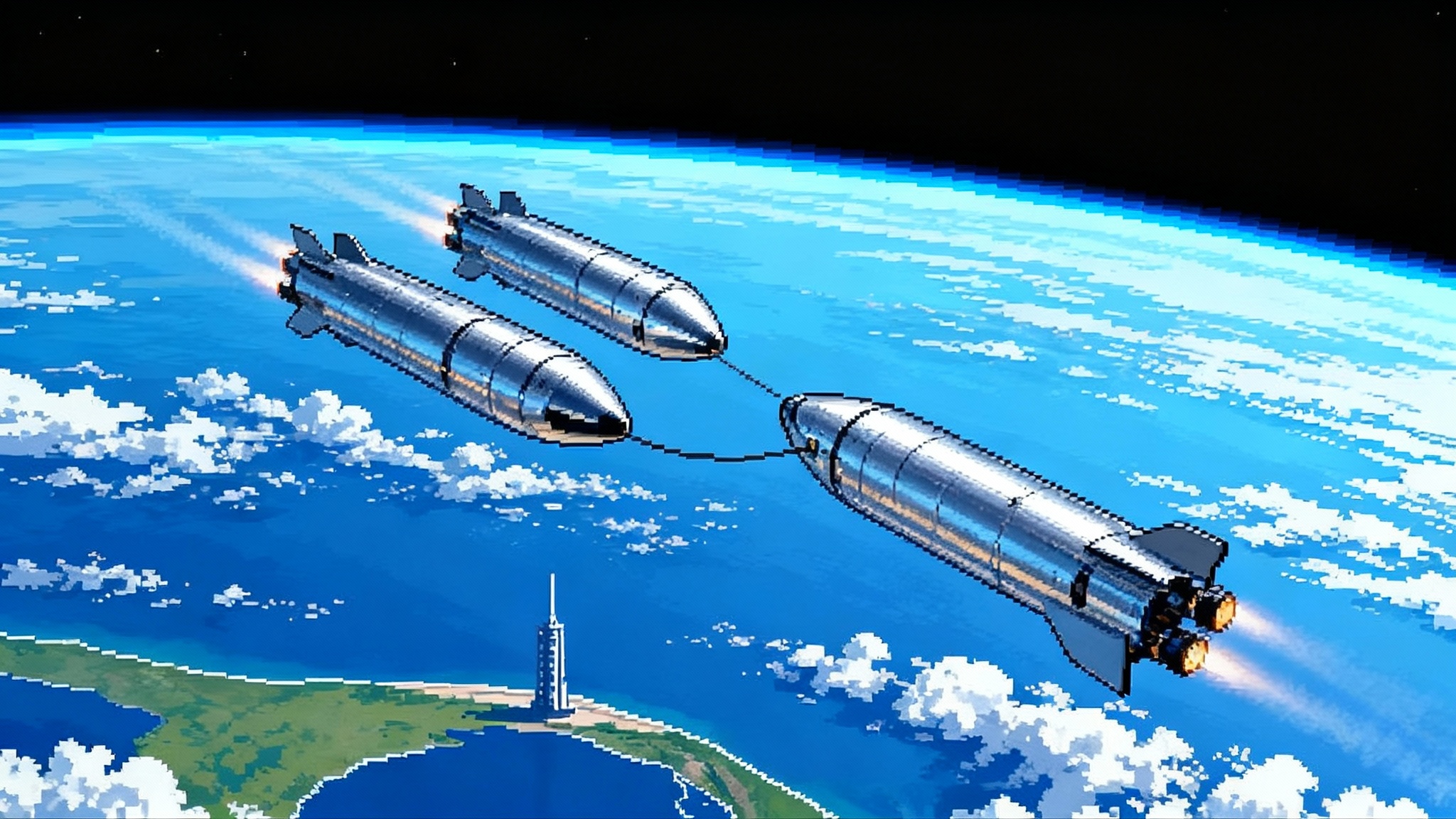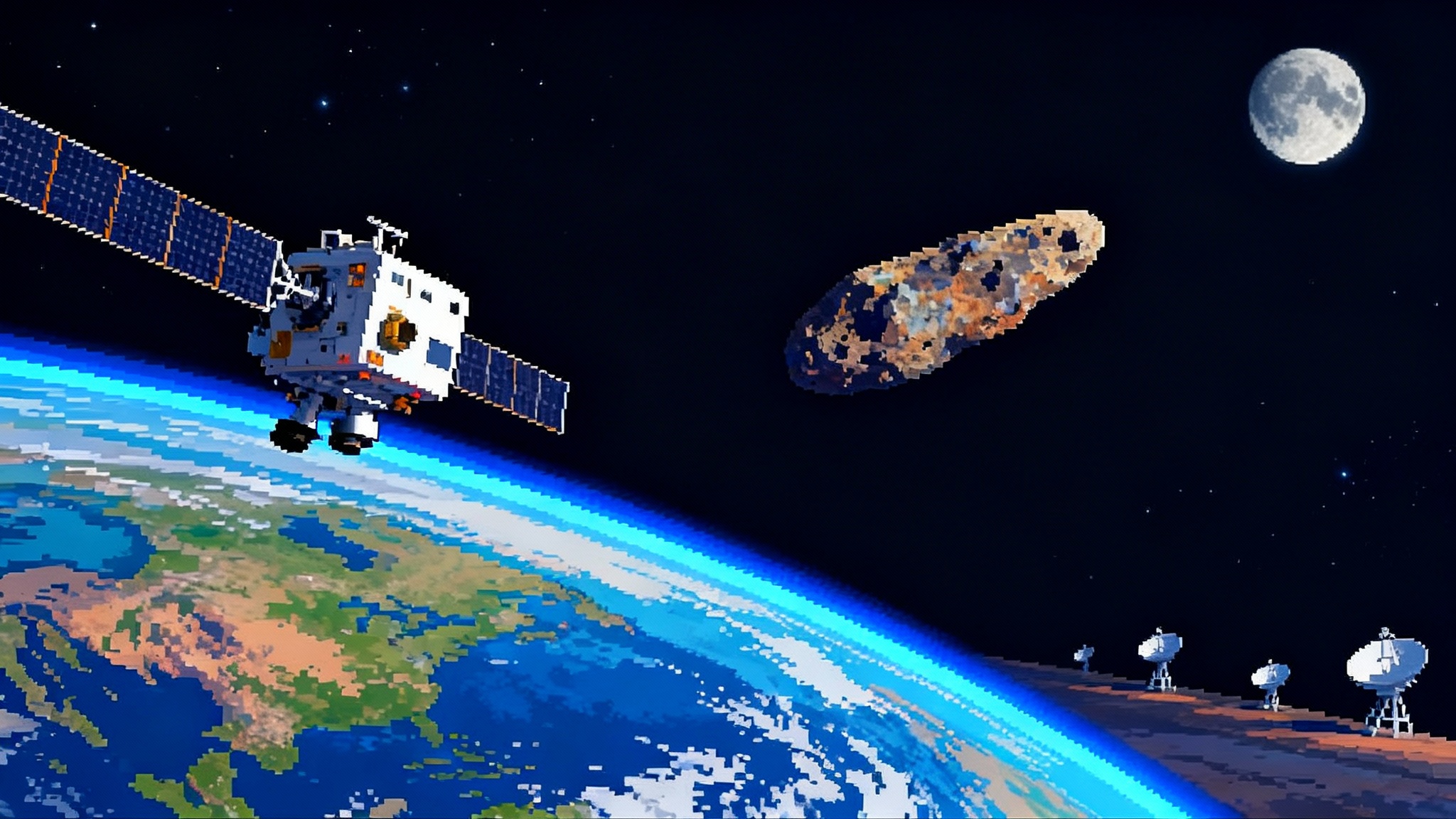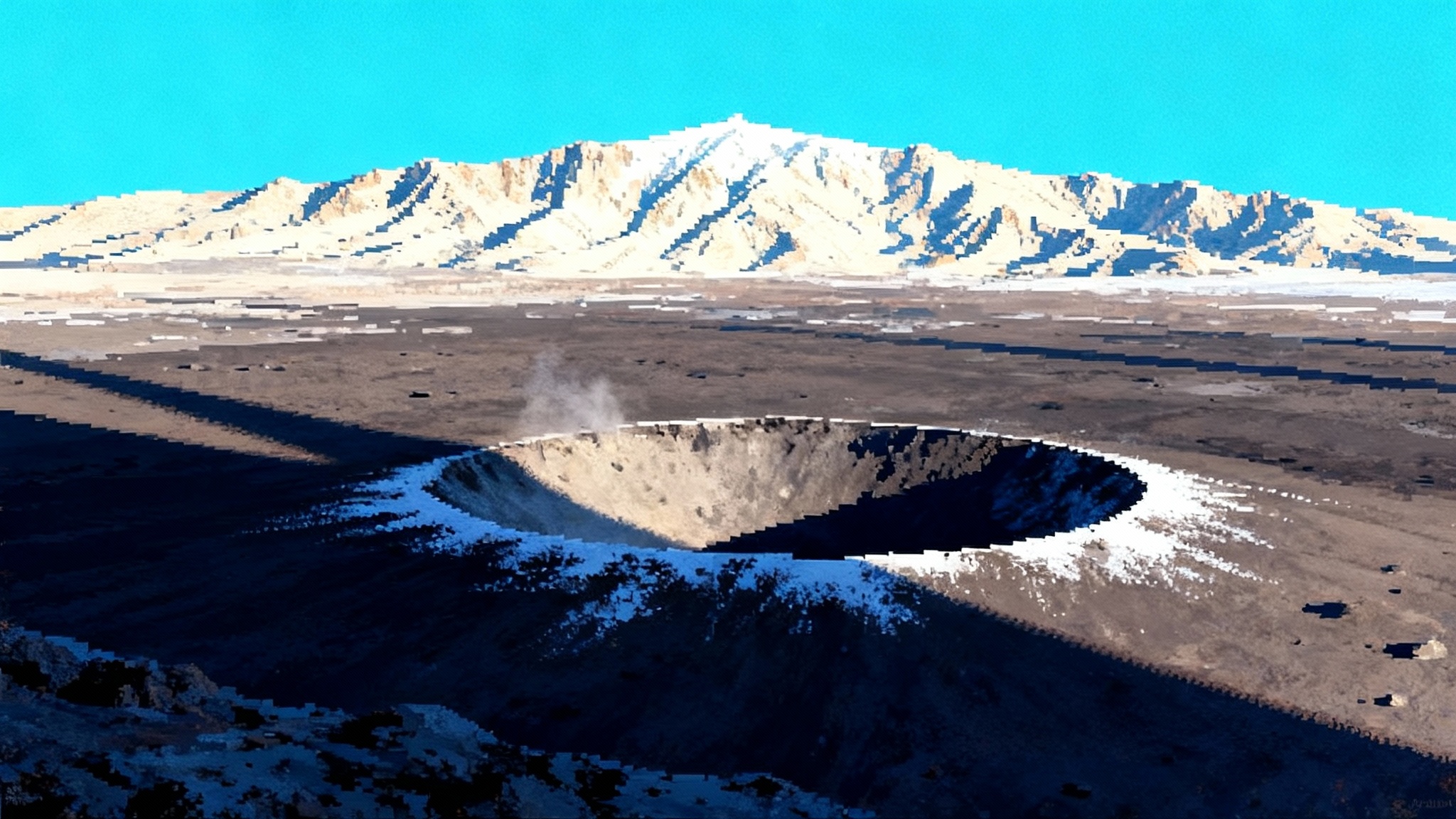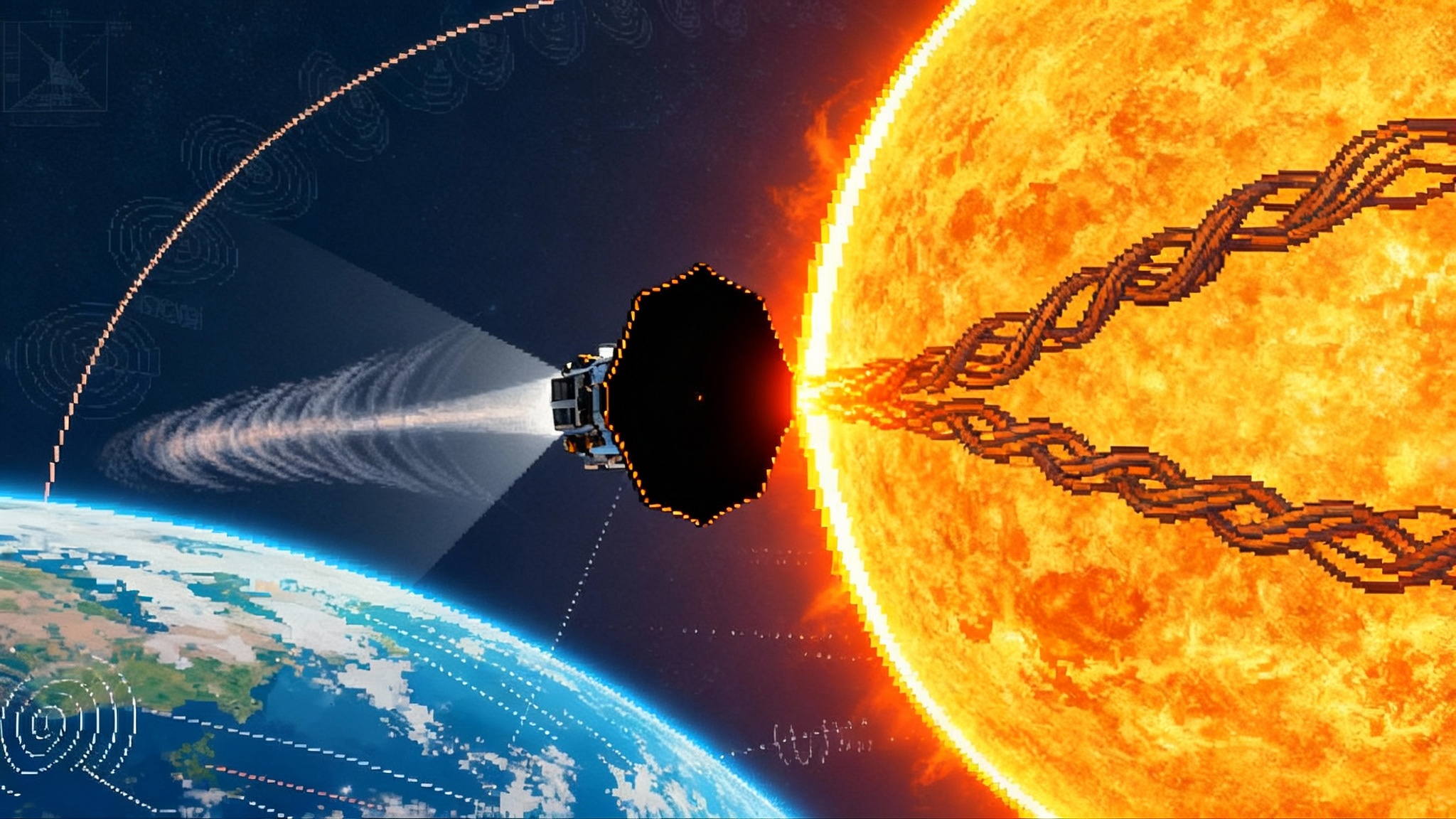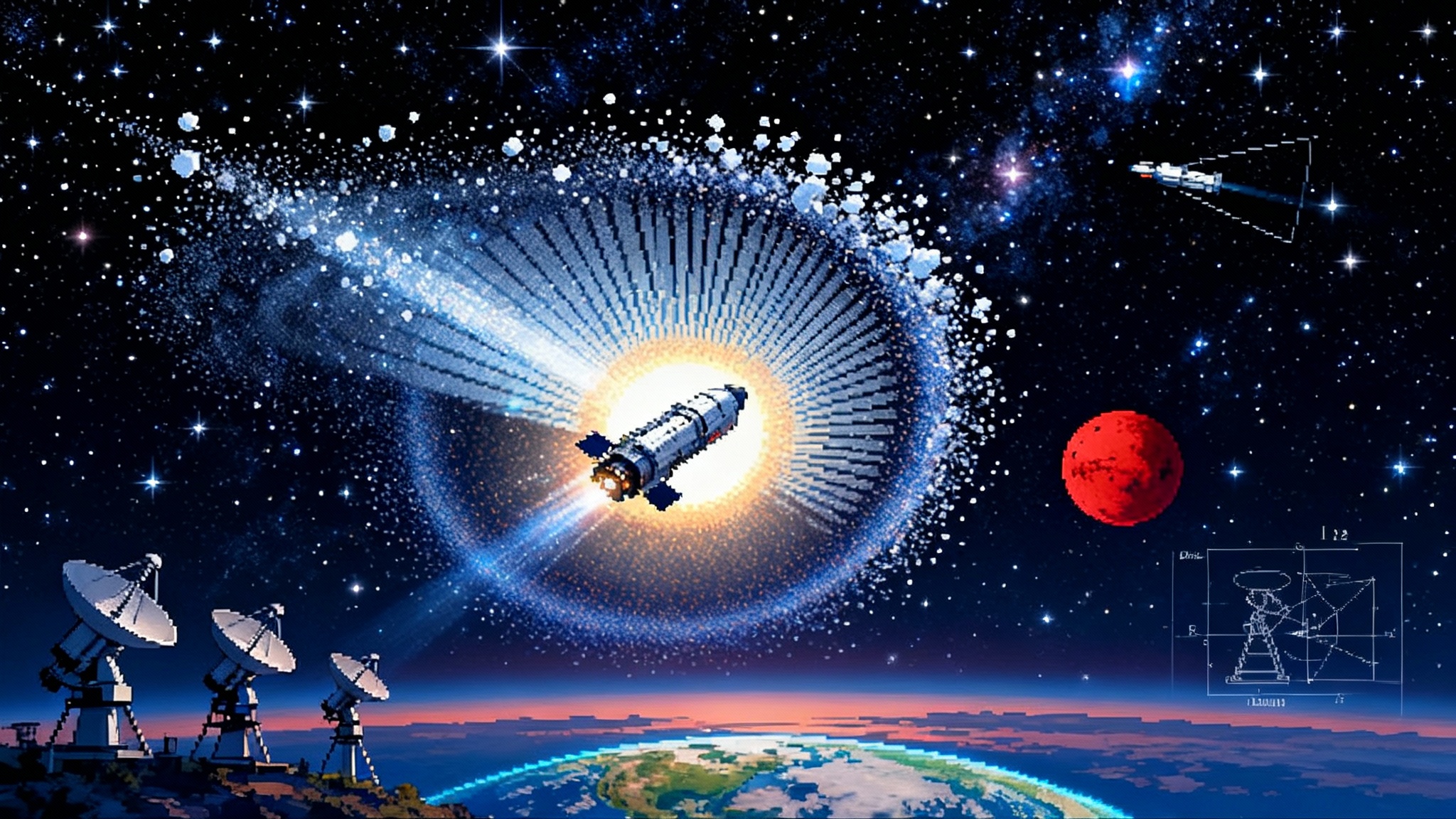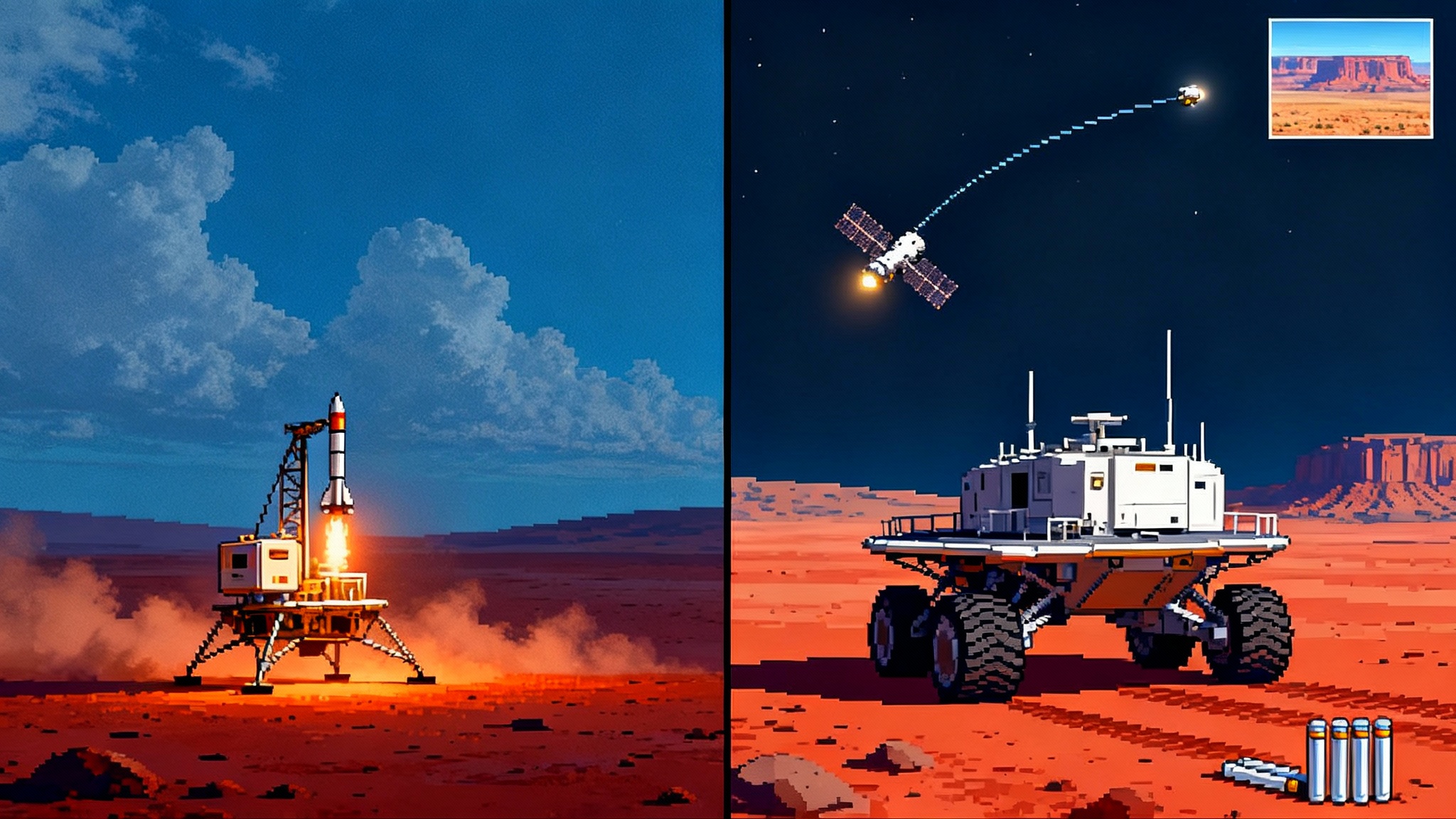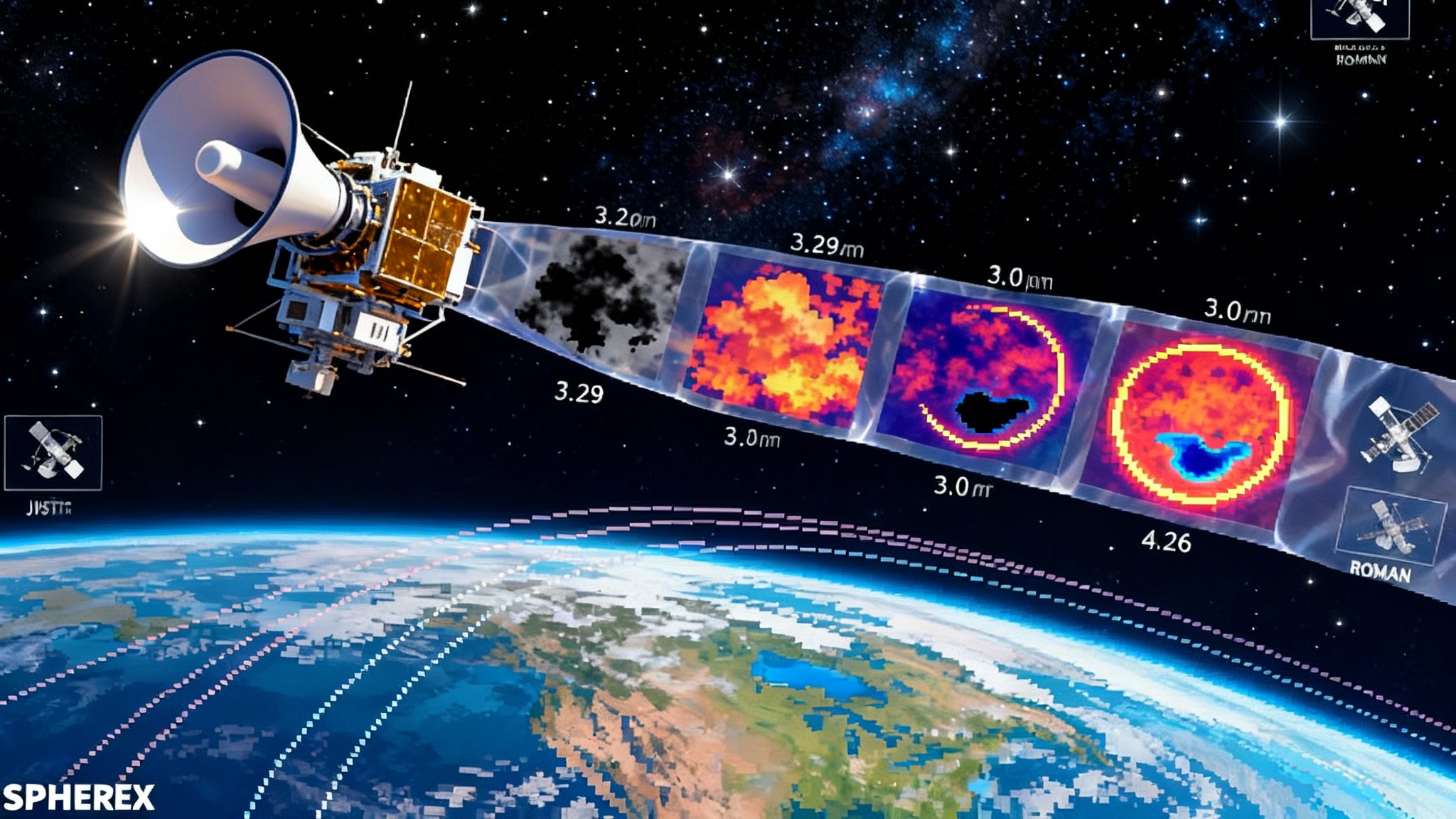New Glenn’s next act: ESCAPADE could switch on Mars space weather
Blue Origin is preparing New Glenn for a late‑2025 science run with NASA’s twin ESCAPADE probes. If the schedule holds, the mission could turn Mars space weather from research into operations, feeding forecasts for entry, comms, and radiation risk.

The month Mars weather went from idea to infrastructure
On Florida’s Space Coast this month, Blue Origin rolled a towering first stage to Launch Complex 36 and primed New Glenn for a hotfire. The company said the second flight of its heavy lifter is slated for late October or November, and this time the payload is pure science: NASA’s twin ESCAPADE spacecraft, built by Rocket Lab, headed for Mars to turn space weather from a research topic into a usable service. Blue Origin New Glenn first stage rollout, and if the schedule holds, a pair of small satellites will soon begin a multi‑year plan to deliver stereo, near‑real‑time readings of how the solar wind batters the Red Planet.
That sounds esoteric until you picture what future Mars crews will actually face. When a vehicle slams into the Martian atmosphere at hypersonic speed, it rides a sheath of ionized plasma that can black out radio links and make guidance less forgiving. Meanwhile, bursts of charged particles from the Sun can raise radiation levels and alter the density and electrical behavior of the upper atmosphere, as Parker Solar Maximum insights show. Without timely space weather data, you are landing blindfolded with the weather radar off.
ESCAPADE is designed to switch that radar on.
Why Mars needs a space weather forecast
Earth lives inside a protective magnetic bubble generated by a global dynamo. Mars does not. Instead, it has a patchwork of crustal magnetic fields embedded in ancient rocks. The solar wind hits this uneven shield and carves a hybrid magnetosphere, complete with a bow shock, a magnetosheath, and a long magnetotail that drags atmospheric ions away into space. This interaction is not just academic. It drives atmospheric escape over geologic time and sets the day‑to‑day electrical environment that spacecraft and crews must navigate.
The practical consequences are concrete:
- A solar storm can pump energy into the upper atmosphere, changing its density. That shifts where and how a heat shield bites into the air during entry, descent, and landing. A few percent change in density can move peak heating and deceleration altitudes by kilometers.
- The same storm can thicken the plasma sheath around a descending capsule, deepening radio blackout or forcing a switch to different frequencies and link geometries. That matters for precision landing and relay timing.
- Energetic particles and plasma waves can stress electronics, upset sensors, and degrade high‑gain links between orbiters and surface assets. For a crew habitat relying on orbital relays, that is a risk you plan for, not ignore.
Forecasting those effects at Mars requires two things Earth space weather already enjoys: multipoint measurements and context. One probe gives you a snapshot. Two or more give you a map. For a sense of how distributed sensors drive forecasts near Earth, see IMAP at L1 weather map.
Two ears listening to a solar storm
Think of ESCAPADE as a pair of ears. With two identical spacecraft listening to the plasma and magnetic fields at the same time from different places, you can tell if a change is moving through space or if it is just a local quirk. This is how meteorologists distinguish a front sweeping across a state from a gust on one hillside.
Each small satellite carries three compact instruments that together trace the life of charged particles at Mars:
- A magnetometer mounted on a boom to measure the local magnetic field cleanly, away from spacecraft interference.
- An electrostatic analyzer that counts and characterizes the energies of electrons and ions, the raw ingredients of space plasma.
- A Langmuir probe that samples the local electron density and spacecraft potential, a direct read on the plasma environment that affects communications.
Because the two spacecraft are identical, their data can be differenced in near real time to separate time variations from spatial structure. If both see the bow shock move at the same moment, the shock jumped. If the upstream craft sees a change first and the downstream craft sees it later, scientists can back out the speed and direction of the disturbance, a key input to a forecast.
From beautiful science to useful minutes
Scientists love detail. Astronauts love minutes. The leap ESCAPADE enables is practical: not just better science but the ability to deliver usable space weather products on timelines that matter for operations.
Here is what that could look like once the spacecraft are on station around Mars:
- A simple traffic‑light index for entry, descent, and landing that rates upper‑atmosphere variability over the next few hours as low, moderate, or high based on how the bow shock and magnetosheath are moving.
- A comms risk flag that blends local electron density, magnetic field orientation, and solar wind conditions to recommend frequency bands and relay geometries for the next ground pass.
- A radiation alert calibrated for Mars orbit and surface, using energetic particle counts and field direction to warn habitats and surface crews when to pause extravehicular work and shelter.
ESCAPADE will not beam continuous video of the magnetosphere to mission control. The twin probes are small, power is precious, and the Deep Space Network is oversubscribed. What makes this viable anyway is smart onboard summarization. Instead of raw spectra, the spacecraft can compute small data products, like shock position, density trends, and field rotations, and ship those in low‑latency packets whenever a relay is available. The heavy science packets can follow later.
This is exactly how Earth space weather works. A global fleet of small sensors and a few flagship observatories feed compact indices to forecasters, who then use models to turn them into guidance for airlines, power grids, and satellite operators. ESCAPADE brings that playbook to Mars.
The flight plan that makes it possible
The trajectory is clever and frugal. The mission is targeted to launch in fall 2025. Rather than sprint straight to Mars, the pair will first loop near Earth for about a year to build energy and then fire engines during a close swing past Earth in late 2026, exploiting the Oberth effect to gain extra punch. That sets up a cruise and a September 2027 arrival, with the science campaigns beginning after the twin orbits are trimmed and synchronized in 2028. The ESCAPADE team at the University of California, Berkeley outlines this plan on its ESCAPADE mission design.
Two campaign phases make the stereo magic work. First, both spacecraft fly similar orbits but with timed separations to catch the same boundaries and currents at slightly different moments. Later, the team intentionally diverges the orbits, so one probe can sample near the planet while the other patrols the more distant magnetotail. This lets scientists connect funnels of escaping atmospheric ions with the upstream solar wind conditions that drove them.
Why the heavy lifter matters
The phrase heavy lifter usually conjures images of buses, not Cubesats. Yet New Glenn’s role here is strategic. By pairing a high‑capacity rocket with multiple small spacecraft, a space agency can shift from one big probe with a single view to a swarm that shares a ride and spreads risk.
- One launch can drop off an entire formation, or at least enough nodes to make a network useful from day one.
- The marginal cost per additional sensor can be low when the satellite bus is a commercial product like Rocket Lab’s interplanetary platform, with avionics, power, propulsion, and thermal systems already proven.
- The launch provider can iterate. Blue Origin is building toward higher cadence and reusability. If that path holds, moving a handful of small probes to the front of the queue during a tight planetary window becomes more realistic.
For NASA, ESCAPADE also tests its venture‑class philosophy: match lower‑cost spacecraft with lower‑overhead launch services to take more shots on goal. That approach is not just economical. It lets program managers treat launch and spacecraft as modular pieces that can be re‑manifested when schedules shift.
What this unlocks for crewed entries and comms
Imagine a crewed transport approaching Mars in the late 2030s. The ship’s navigation team is watching a live space weather dashboard fed by two orbiters that have been sampling the bow shock and magnetosheath for months. The forecast suggests a modest uptick in density at 3 p.m. local time and a higher risk of plasma‑related comms dropouts on the direct‑to‑Earth link. The team adjusts the entry time by 18 minutes to align with a calmer window and routes telemetry through an orbiter that will be out of the densest plasma sheath during peak heating. A few hours of notice yields a few percentage points more margin. That is the difference between nominal and hair‑raising.
Surface missions gain similar benefits. If a solar event is brewing, you postpone a long traverse, switch the habitat to a comms mode that uses frequencies less affected by the current plasma conditions, and prepare for a radiation spike. The decision is not a guess. It is tied to real measurements of fields and particles over the landing site and along the relay path. These capabilities also support tight windows for MSR 2.0 sample return, where reliable comms and environment forecasts protect high‑value assets.
A playbook for planet‑by‑planet space weather grids
The real breakthrough is not just the twin sensors but the template they represent: heavy‑lift delivery of coordinated, low‑cost swarms to build persistent space weather grids.
Here is a practical, sequenced playbook for the inner solar system:
-
Mars, now. Fly two to four nodes in complementary orbits. Add a small solar wind sentinel in a distant Mars orbit to give lead time on incoming shocks. Use onboard algorithms to compute low‑latency indices and feed a shared forecast model.
-
Venus, next. A single orbiter struggles to separate time and space at a planet with a thick atmosphere and no global magnetic field. A three‑node swarm can map the induced magnetosphere and the day‑night asymmetry, a big help for aerobraking and radar mapping campaigns where plasma conditions affect signal quality.
-
Moon, as an operations testbed. Space weather at cislunar distances still matters, especially for uncrewed logistics tugs, power beaming trials, and planned radio astronomy arrays on the far side. A handful of small satellites placed at Earth‑Moon Lagrange points and in low lunar polar orbit can watch the plasma environment that hammers solar arrays and perturbs precision navigation.
-
Mercury, opportunistically. It sits inside a ferocious part of the solar wind with a dynamic magnetosphere that resembles a scaled‑down Earth. A pair of tiny sentinels could provide early warnings for solar particle events that also threaten assets throughout the inner system.
-
Tie it together. A federated model that ingests measurements from every node and from heliophysics flagships near the Sun can generate route‑planning products for transfer stages and landing windows years ahead. The model does not have to be perfect to be useful. Consistent, calibrated indices are already good enough to make decisions safer and cheaper.
The economics work because the parts are now manufacturable. Rocket Lab’s Explorer‑class platform used for ESCAPADE is a modular kit that can be dialed up for interplanetary duty. Blue Origin is iterating toward a rocket designed to throw tens of tons to orbit, then do it again. Those trends bend the curve toward networks, not one‑offs.
What to watch in the coming weeks
- Engine hotfire and stacking. New Glenn will complete stage testing and move to full vehicle checks before launch. Once stacked, fairing encapsulation brings Blue and Gold into one stack for the ride uphill.
- Launch and Earth‑loop phase. After launch, the twin probes will enter a roughly year‑long Earth‑proximity loop that saves propellant and sets up the high‑energy burn the following year.
- Trans‑Mars Injection in late 2026. The Oberth burn is the moment that commits the pair to Mars.
- Mars arrival in 2027 and orbit trimming in early 2028. Only after the orbits are tuned does the stereo science truly begin, followed by operational products that can inform entry, descent, landing, and communications planning.
With each step, the mission shifts from promise to practice. The first near‑real‑time indices could emerge during the Earth‑loop year, providing a rehearsal for the data pipeline and showing how the probes will summarize measurements into products a flight director can use.
The bigger strategic angle
This second New Glenn flight is more than a schedule milestone. It marks the point where heavy‑lift rockets and small, smart probes meet to create infrastructure. Earth did not get a weather service from a single satellite. It got it from a network. Mars will be the same. The difference is that now the components are cheap enough, and the rides are large enough, to build that network on purpose.
For NASA, that means designing missions and architectures that assume space weather is always on the console. For industry, it means selling not just spacecraft but the services they enable: low‑latency indices, hazard maps, and planning tools for agencies and private explorers. For crews, it means a future where entry, descent, and landing is planned with the same respect for the environment that pilots bring to a thunderstorm.
The bottom line
ESCAPADE will not make Mars gentle. It will make Mars legible. By pairing a new heavy lifter with a low‑cost stereo mission, NASA, Blue Origin, Rocket Lab, and the University of California, Berkeley are writing the first chapter of a practical Mars space weather service. When the twin probes begin to send back synchronized readings of the bow shock snapping and the magnetotail breathing, we will not just understand the environment. We will be able to work with it.
That is the smart path to a crewed future on the Red Planet: take the invisible forces seriously, measure them from more than one vantage point, and turn those measurements into decisions with minutes to spare.
